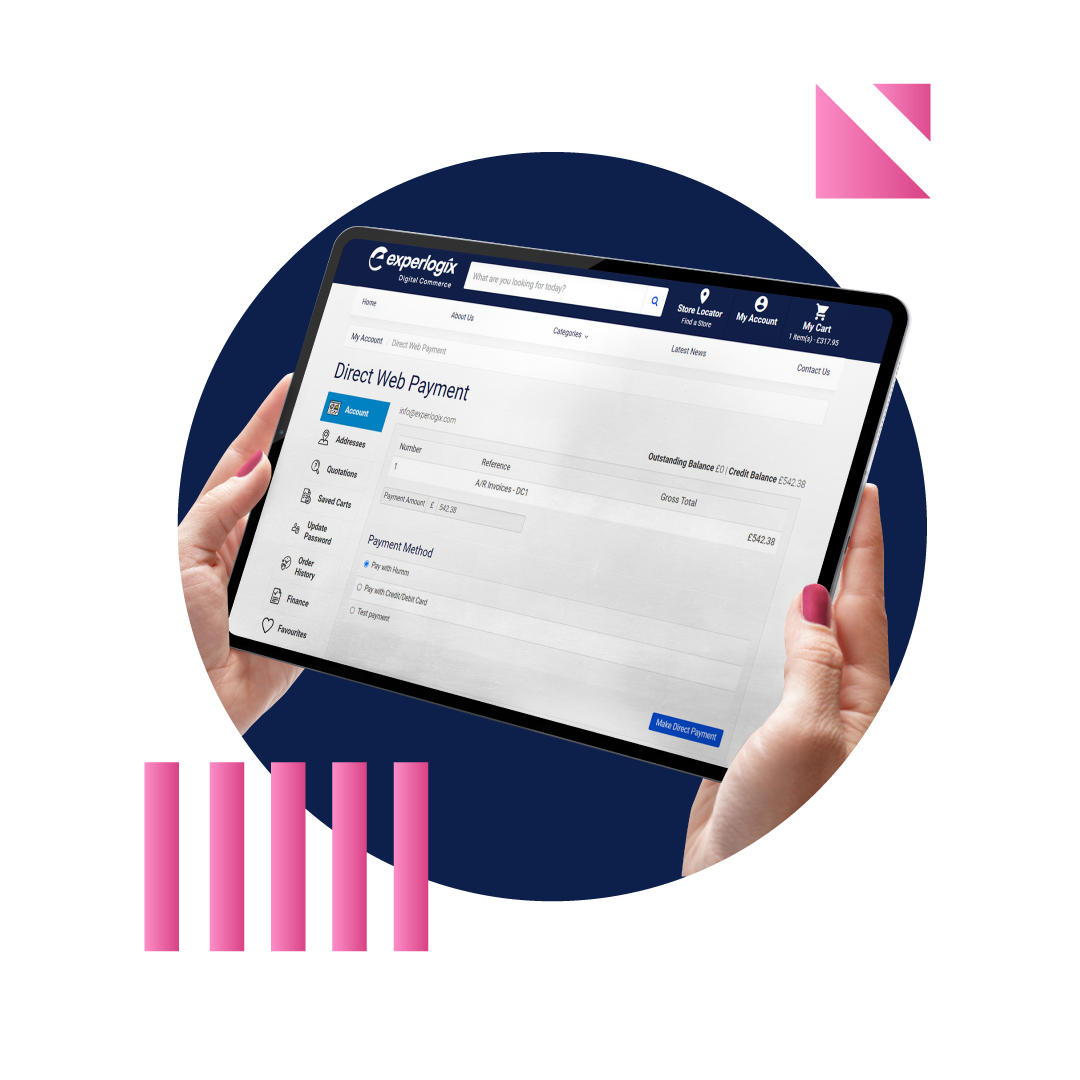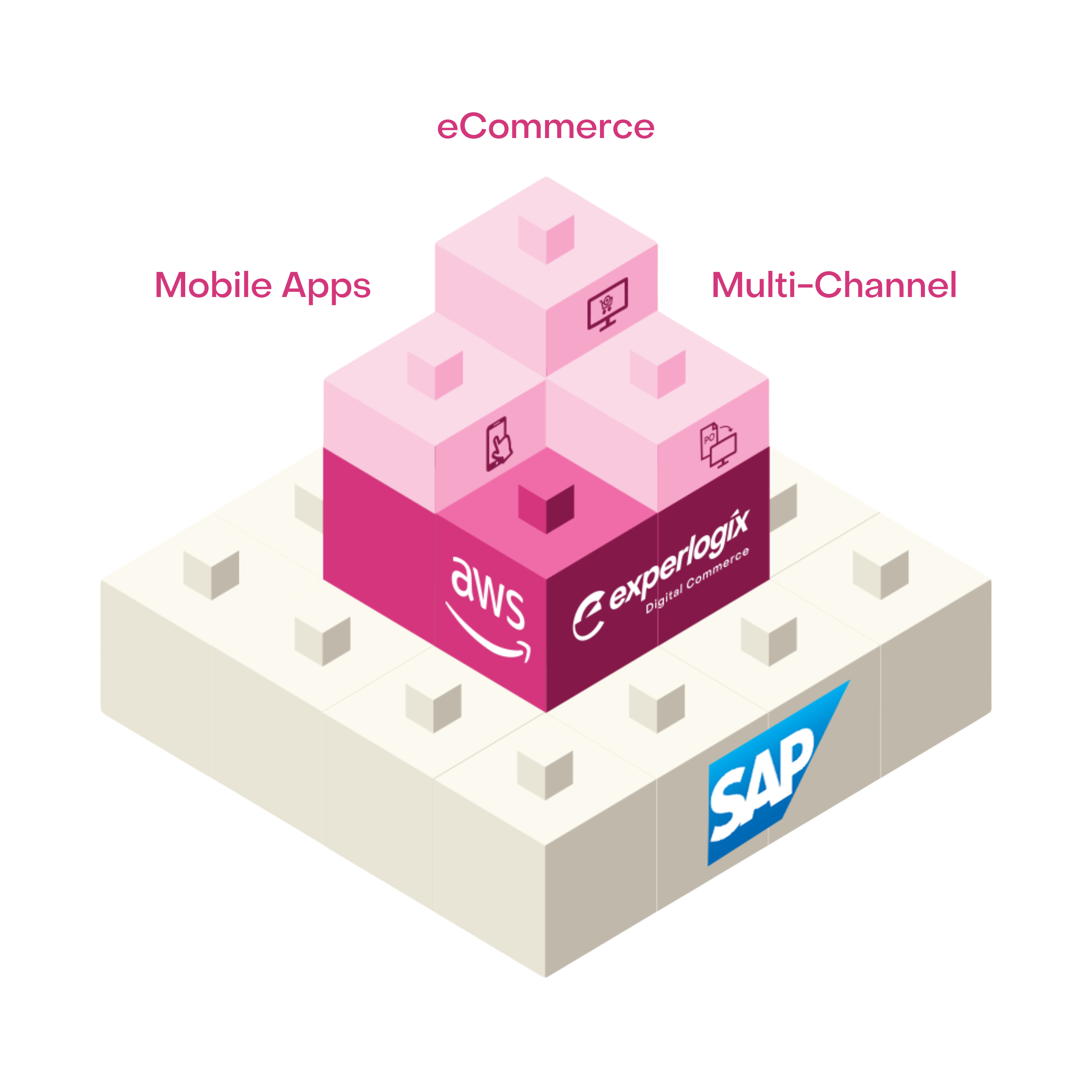SAP Business One
Digital Commerce for SAP Business One

Scalable, Integrated Digital Commerce for SAP Business One
Experlogix Digital Commerce for SAP Business One lets you leverage deep data integration from within SAP Business One to power your online sales and grow efficiently. Real-time integration of Digital Commerce allows users of your digital ordering solutions immediate access to up-to-date product and customer details along with 24/7 ordering, while you receive live orders seamlessly into your SAP Business One system.


The Benefits of the Experlogix Digtial Commerce with SAP Business One
Experlogix Digital Commerce empowers your business to streamline and automate online order-taking using integrated portals, apps and webshops.
-
Real-Time Integration
Full seamless integration of your ERP and business management system SAP Business One with the Experlogix Digital Commerce ordering platform.
-
All-in-one Solution
Award winning eCommerce technology with multiple options to suit your business needs, including B2B webshops, B2C retail eCommerce, customer and supplier portals, microsite, order punch out and more.
-
Mobile App Suite
Dedicated mobile ordering apps for both your customers and your sales team including a SalesRep app for field sales and van sales, branded customer apps, in-store sales apps, along with custom app development.
-
Full Digital Catalogue
Management of even the largest catalogues from one platform allowing ease of use across multiple digital ordering products and marketplaces such as Amazon, eBay, Facebook and Instagram.
-
Secure Cloud Platform
A fully supported secure platform allowing customers to benefit from the fast deployment, a product roadmap with new features monthly, all with continuous in-house support and training from our customer success team.
-
API & Integration
Integration of the platform with multiple API’s including payment gateways like Worldpay, Stripe and Realex plus other tools like Mailchimp, HotJar, Campaign Monitor and more.
Useful Resources
Empower Your Team. Engage Your Customers.
Shorten sales cycles, increase average order values, and reduce manual errors across the customer lifecycle.
Request a Demo
